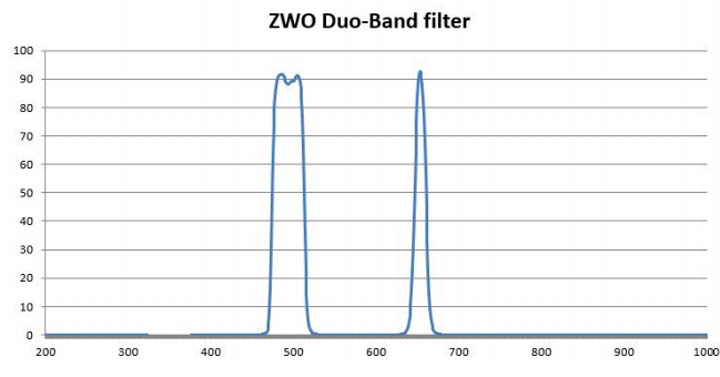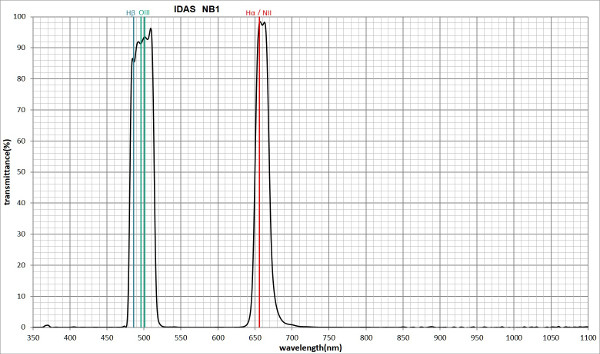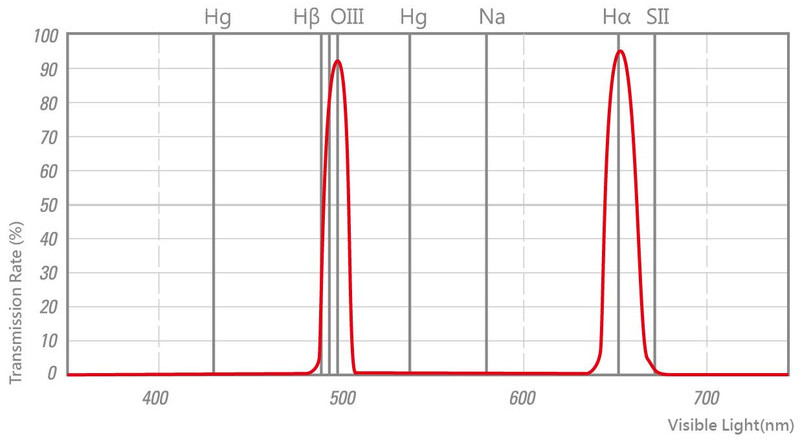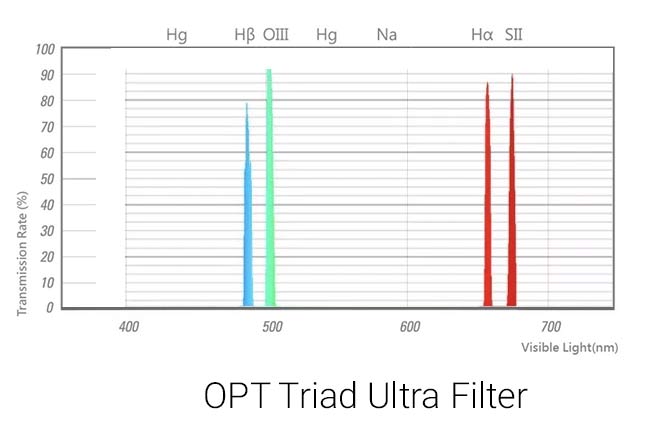Every year, the illumination from cities is becoming stronger and stronger, creating difficult conditions for shooting deepsky objects. However, progress does not stand still – various filters have appeared that make it possible to cut off spurious light. Narrow-band filters that allow only a specific wavelength (hydrogen H-alpha, oxygen OIII, sulfur SII) have been used by astrophotographers for a very long time and make it possible to capture gas nebulae even under the conditions of strongest exposure. The hero of today’s review is the Optolong L-eNhance filter, passing only the H-alpha, OIII and H-beta lines. In combination with a color camera, it allows you to get a full-color image at once with one frame. Optolong L-eNhance will be of interest primarily to owners of color cameras and aperture telescopes. I immediately warn that it is not suitable for shooting objects of stellar nature (galaxies, star clusters, dust nebulae).

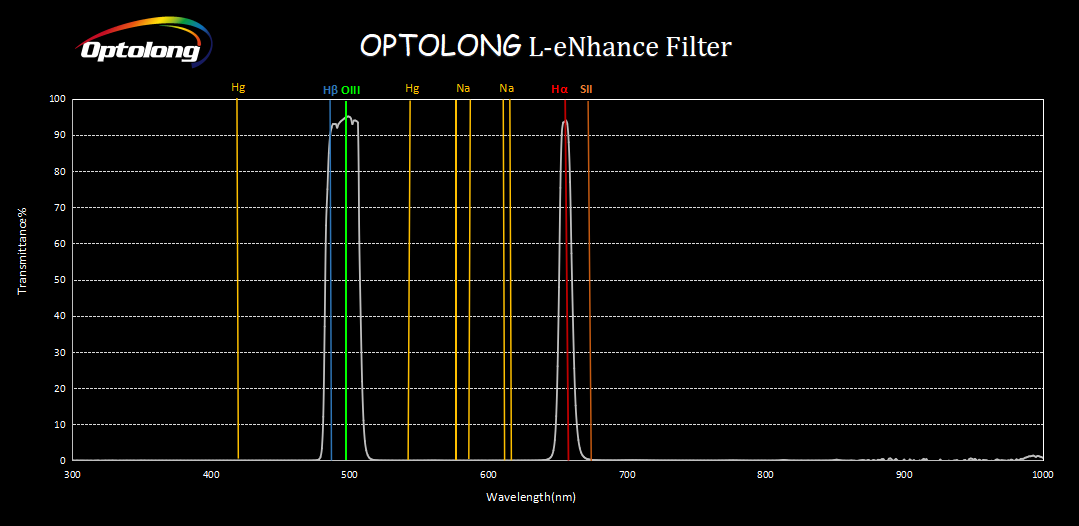
Packaging, appearance
The filter is delivered in a cardboard box. Inside it is a transparent plastic box for storage and transportation. Filter weight 5.4 g, thread diameter 28.5 mm, filter thickness with thread 7 mm, without thread 5 mm, light diameter at the inlet and outlet – 26 mm.
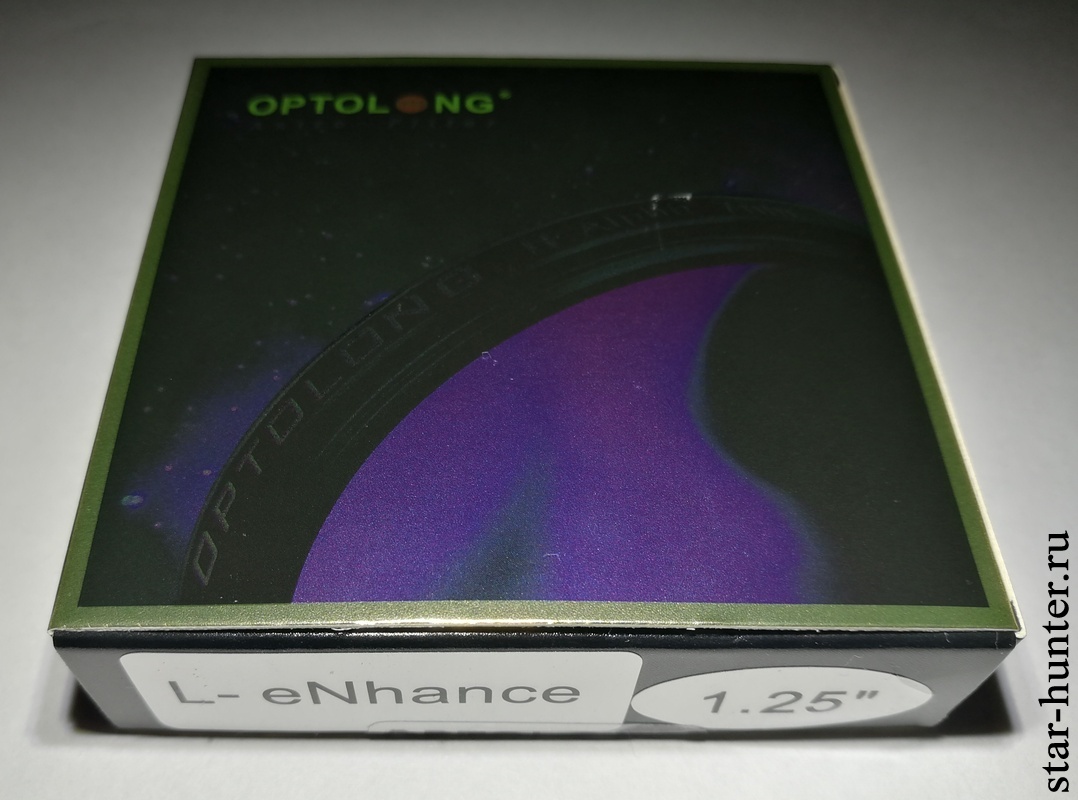


A careful inspection showed that the filter surface was free of scratches and damage. When checking for clearance, the filter appears green. A noticeable purple ring (as in budget UHC filters). When the filter is tilted, the color changes due to a shift in the passband – this is normal for interference filters.

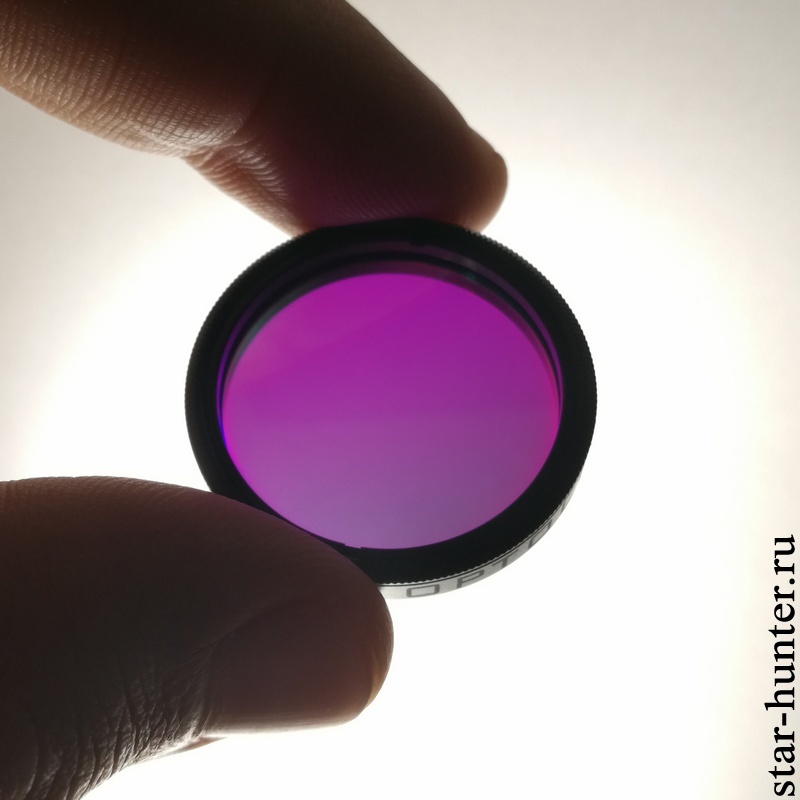
Checking by spectroscope
To obtain a filter spectrum, a budget spectroscope was used. As a source of light – the Sun.



The spectra show that the filter passes the lines of H-alpha, OIII and H-beta according to the declared characteristics. Moreover, in H-alpha it is narrower than a standalone 12 nm filter.
Photo test
When using the filter, an additional adjustment of the white balance is necessary, since the signal in the red channel is low, but a lot in the blue and green channels. By using manual white balance, a satisfactory color balance can be obtained. Of course, it will not be possible to convey the exact color of the stars, but the filter is still more suitable for shooting gas nebulae, so the color of the stars is secondary.
Below are pictures of a white sheet of paper taken on a sunny day and opened in a RAW-converter. For shooting, we used a Canon 550Da camera (with the LPF-2 filter removed) and a Canon 402.8 STM photo lens, as well as an Optolong L-eNhance filter. A color change closer to the corners is caused by a shift in the filter passband for rays incident at an angle to the optical axis.
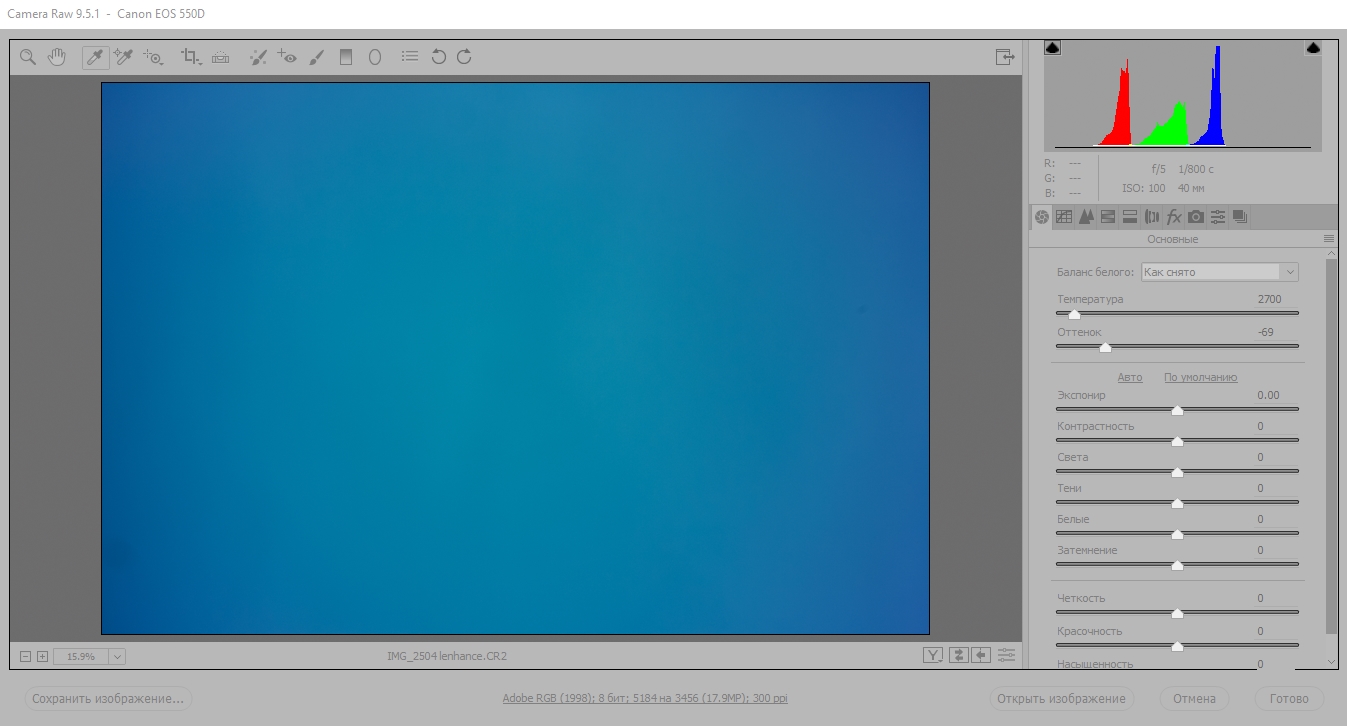
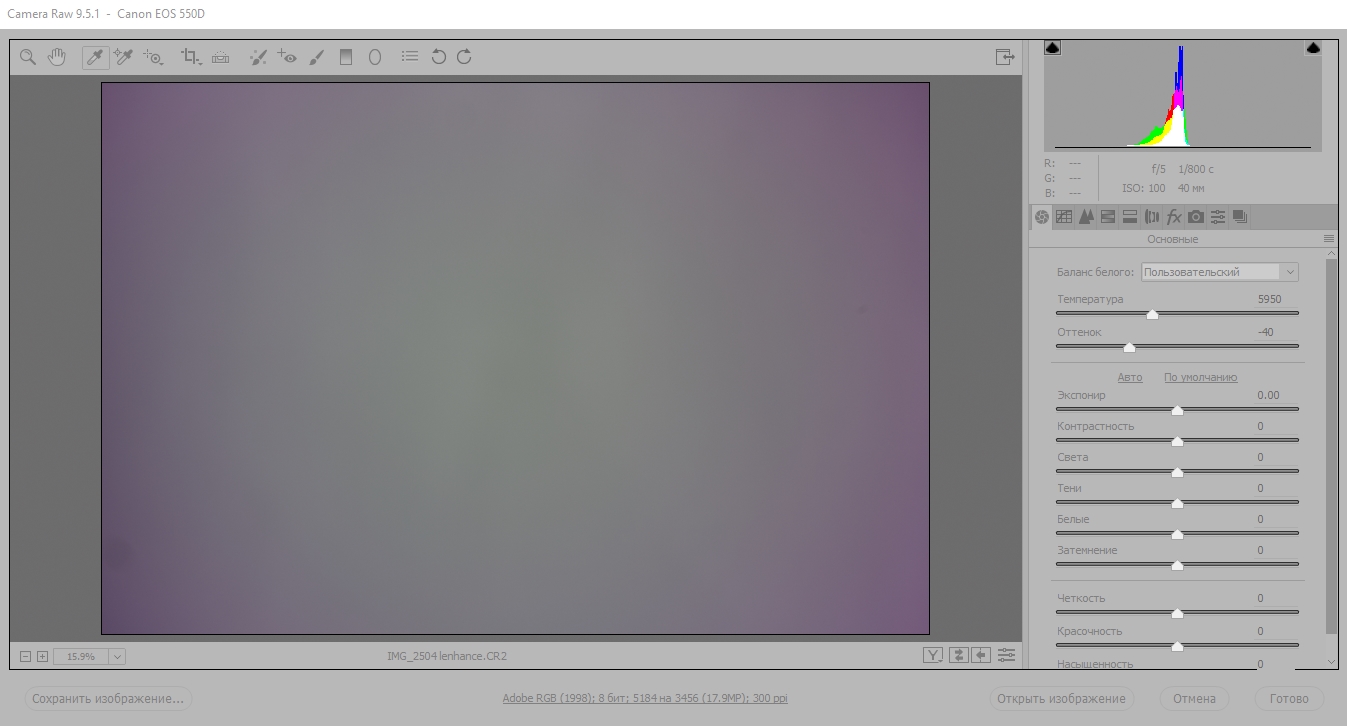
Test in the city sky. Exposure time is 30 seconds, ISO 1600, background white balance.



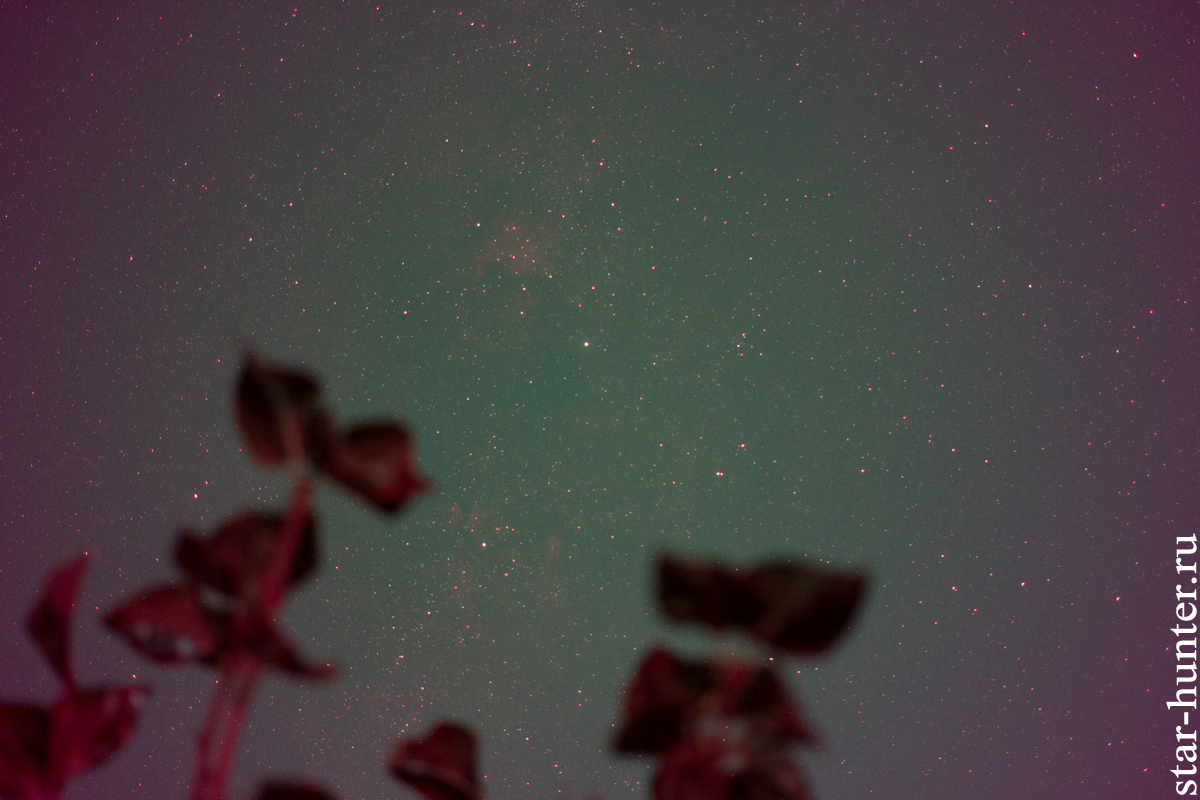
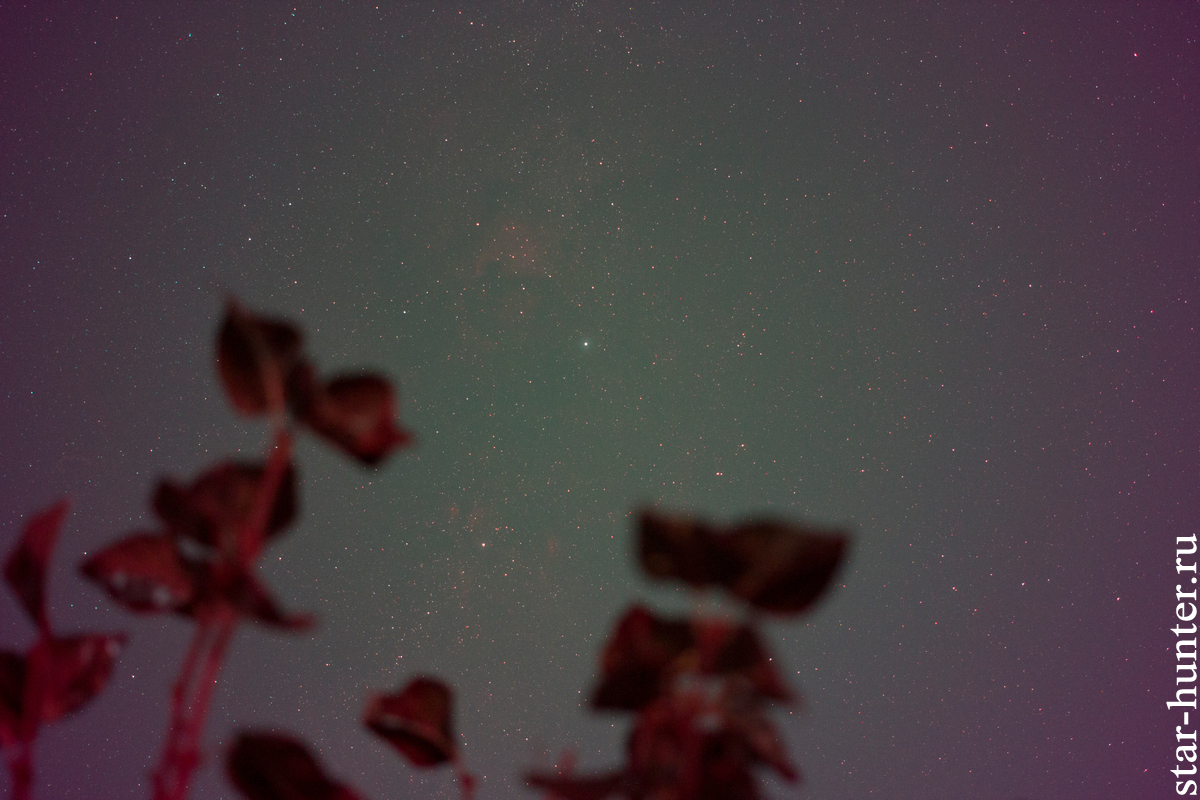

From the pictures you can see that the background with the Optolong L-eNhance filter is the darkest. For shooting under conditions of strong urban light pollution this is a big advantage. In this case, the background is suppressed by about 5-6 times. I assume that it is possible to use this filter and the presence of the moon in the sky.
Two more pictures – without a filter (shutter speed 30 seconds) and with an Optolong L-eNhance filter (shutter speed 120 seconds). White balance on the background.




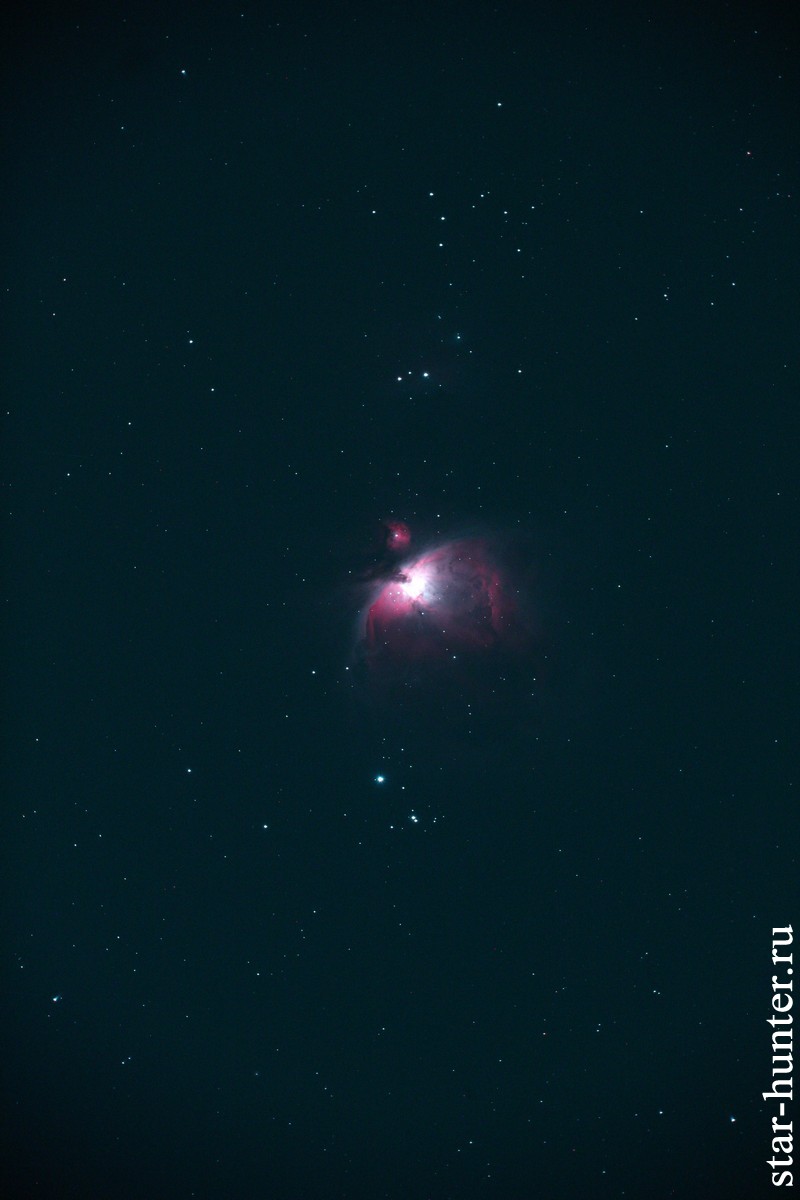
I recommend reading the original RAW files here.
On December 2, 2019, I was able to test the filter in conjunction with the Samyang 1352.0 ED lens and the ASI ZWO 183MC. As expected, due to the spherochromatism of the lens, focusing difficulties arose – the position of the focal points in the red and green channels does not coincide a bit. You can choose from a blurred red channel with ugly red halos around the stars, but clear green and blue channels, or slightly better sharpness in the red channel, but plump stars in the green and blue channel. Faint reddish halos around bright stars are also noticeable. Perhaps this is a manifestation of that “ring” along the edge of the filter.A slight inclination of the focal plane was added to the problems. Nevertheless, it was possible to get a very encouraging result.
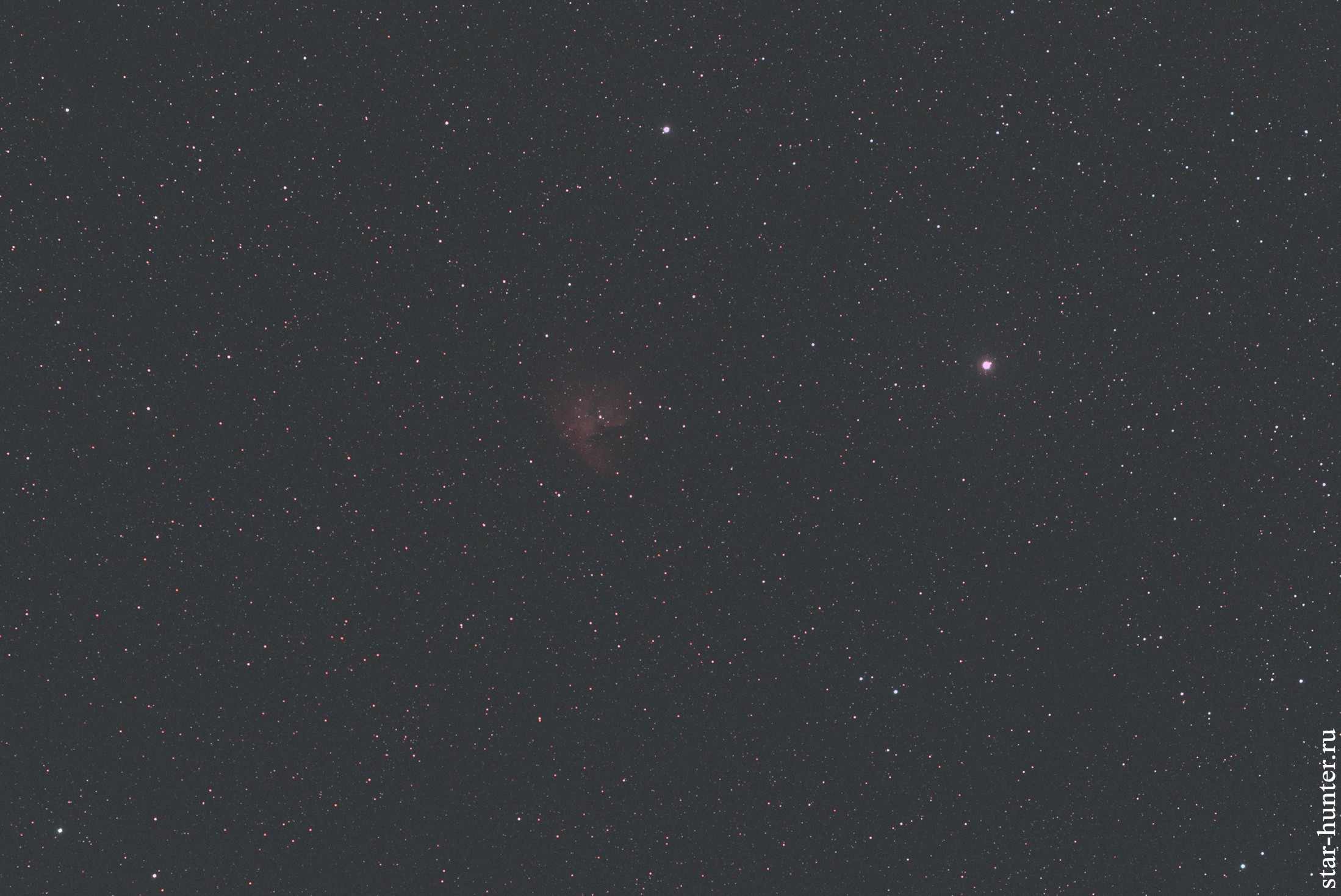
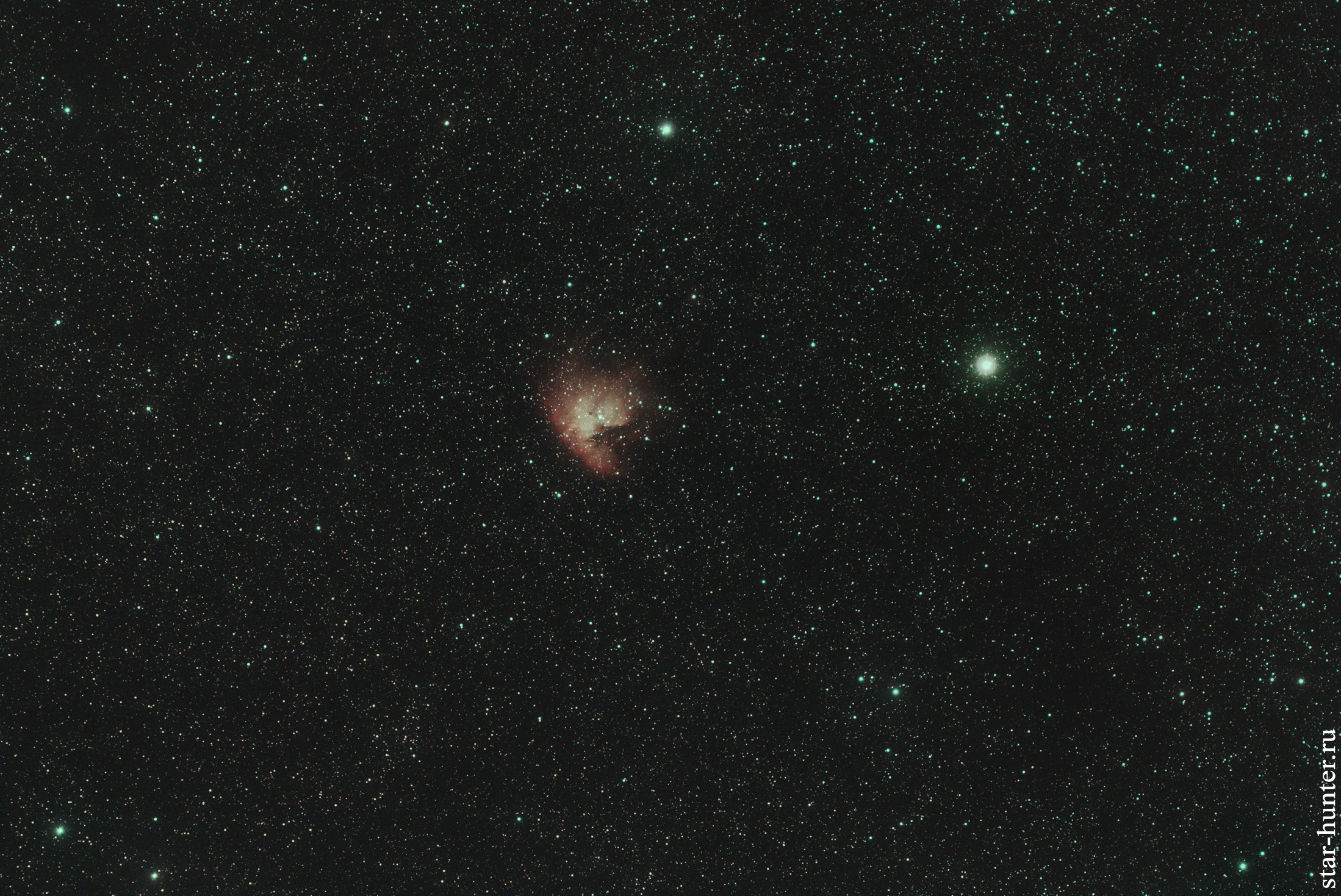
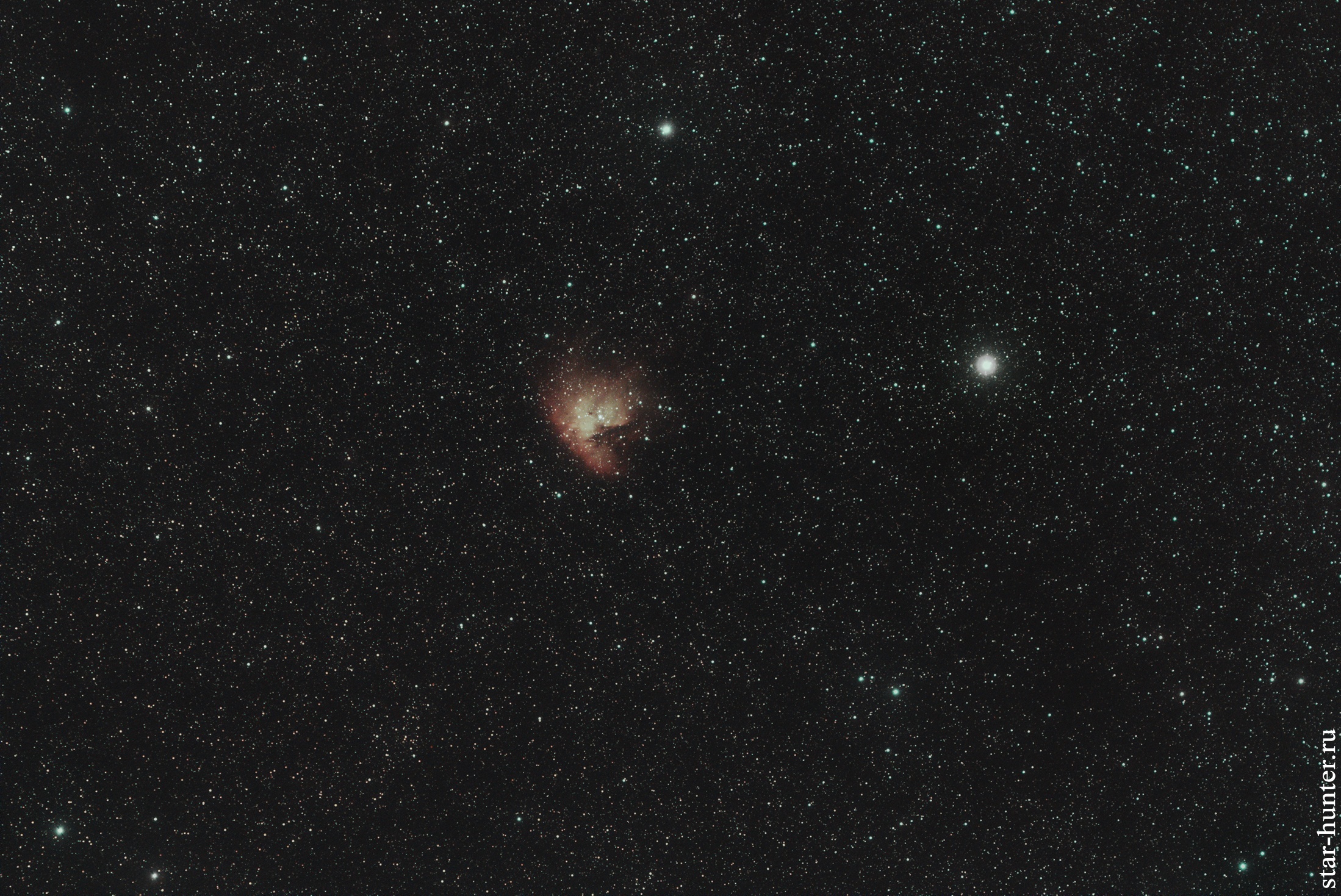
Equipment:
-Samyang 1352.0 ED lens
–Optolong L-eNhance 1.25″ filter
–ASI ZWO 183MC camera
-Sky-Watcher AZ-GTi mount.
30 frames per 120s.
Calibration with PIPP.
Location: Russia, Anapa, backyard. Weak fog in the sky.
I also want to note that the L-eNhance filter can be successfully used for astro photography of nebulae with an achromatic refractor, since it effectively cuts off the blue and violet chromatic halos around the stars. However, to improve image quality across the field, a field rectifier is needed. For example, I use a Sky-Watcher BK 705 refractor with a WO 0.8x II field rectifier.
It is possible that the filter will be effective in visual observations, but this requires additional testing and comparison with OIII and H-beta filters.
Optolong L-eNhance 1.25 “is an interesting filter that allows you to remove gas nebulae in conditions of strong exposure. By the degree of suppression of light pollution, it easily bypasses various budget filters against exposure – Svbony UHC, Svbony CLS, Baader UHC-S, Konus ALP, Optolong L-Pro.
Comparison with analogues
In my opinion, adding the H-beta line is a rather interesting solution. The blue channel is fully used – in the H-beta line, gas nebulae are also visible. On the other hand, it is the large bandwidth in the blue-green region that limits the filter’s ability to suppress light pollution. The closest analogues of the Optolong L-eNhance filter are ZWO Duo-Band, IDAS NB1, Triad Tri-Band, STC Astro Duo, Astronomik UHC.
The ZWO Duo-Band is slightly wider than the L-eNhance (and cheaper).
The Triad Tri-Band is very similar to Optolong, but narrower in the H-alpha line (much more expensive).
IDAS NB1 still captures the NII nitrogen line (there are only M48 versions and M52 is noticeably more expensive than 1.25 “).
STC Astro Duo is wider in the H-alpha line and already in OIII (more expensive than L-eNhance). It is suitable for shooting in places with very strong exposure.
Astronomik UHC wider in red area.
There is a more unusual filter – the OPT Triad Ultra Filter, which allows H-beta, OIII, H-alpha and SIII to pass through, and all this in narrow bands! But it costs almost 8 times more expensive than Optolong.
Summary
The Optolong L-eNhance filter impressed me nicely. The spectrum coincides with the declared. In terms of light suppression, it easily bypasses all the wideband filters I have (CLS, ALP, UHC, UHC-S, L-Pro). It is planned to use it together with an achromatic refractor to obtain long-exposure astrophotographs. I’ll take the purple ring on the edge of the glass to the disadvantage – it is possible that because of it there is a halo around the star. I will try to blacken it. I recommend this filter to astrophotographers, forced to shoot celestial objects under conditions of strong exposure.
Optolong L-eNhance filter I bought on aliexpress in the store “Laida Optics”.
Have questions? Ask in the comments, I will gladly answer.
Реклама: ООО “АЛИБАБА.КOМ (РУ)” ИНН 7703380158
